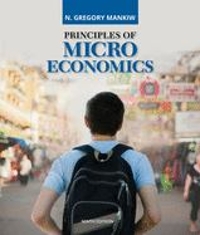Question
3. [ Challenge ] While the following questions aren't themselves very challenging, this is a challenge question because you will need to do a lot
3. [Challenge] While the following questions aren't themselves very challenging, this is a challenge question because you will need to do a lot of reading in order to answer them properly. I decided against having you write a 3-2-1 report for one or both of the journal articles, in order to save you (and the TA!) additional work, but you should still at least skim both the articles, and read closely the sections relevant to the questions being asked.
Sources you will need for this question:
- Ogilvie Flour Mills Company. (1905). Ogilvie's Book for a Cook. Montreal: Ogilvie. https://archive.org/details/McGillLibrary-rbsc-cookbook-coll-TX7156O431905-copy2-18650/mode/2up
- Everitt, J. (1993). The early development of the flour milling industry on the Prairies. Journal of Historical Geography, 19(3), 278 - 298. https://doi-org.ezproxy.library.uvic.ca/10.1006/jhge.1993.1018
- Varty, J. F. (2004). On Protein, Prairie Wheat, and Good Bread. The Canadian Historical Review, 85(4), 721-753. https://doi-org.ezproxy.library.uvic.ca/10.3138/CHR.85.4.721
In 1905, the Ogilvie Flour Milling Company published the first edition of 'Ogilvie's Book for a Cook', one of the earliest and most popular Canadian cookbooks. The cookbook featured flour recipes and recommended the use of Ogilvie's Royal Household brand flour.
3.a
a. (5 marks) Use information from the Everitt (1993) paper (and, optionally, ECON 321 lecture material) to answer the following question: Why would the Ogilvie Company have first published the book in 1905, as opposed to earlier or later? (Note: New editions of the cookbook continued to be published at least until the 1930s.) For full marks, you must show that you are using information from Everitt (1993).
b. b. (5 marks) The cookbook was an effective way for the Ogilvie company to send messages to consumers of flour. Of all the messages the company could have chosen to send, it chose to focus on uniformity. There were at least two types of uniformity: uniformity in use (use our flour and you will get consistent, high-quality results in your baking) and uniformity in production (we use standardized equipment to produce large amounts of identical flour). See for example page 18 of the cookbook: "ROYAL HOUSEHOLD Flour is perfectly milled, all the flour granules are uniform in size, the sponge rises uniformly, the bread is even in texture, perfect in flavour, good-looking, appetizing bread, easily digested."
Using information from Everett (1993), Varty (2004) and (optionally) ECON 321 lecture material, explain why it made sense for the Ogilvie company to focus on uniformity. For full marks, you should make it clear that you are using material from the two papers, and you should explain why uniformity was valued by consumers, and why the Ogilvie company was in a better position to offer 'uniformity' (in both senses) than most of its competitors in 1905.
Step by Step Solution
There are 3 Steps involved in it
Step: 1

Get Instant Access to Expert-Tailored Solutions
See step-by-step solutions with expert insights and AI powered tools for academic success
Step: 2

Step: 3

Ace Your Homework with AI
Get the answers you need in no time with our AI-driven, step-by-step assistance
Get Started


